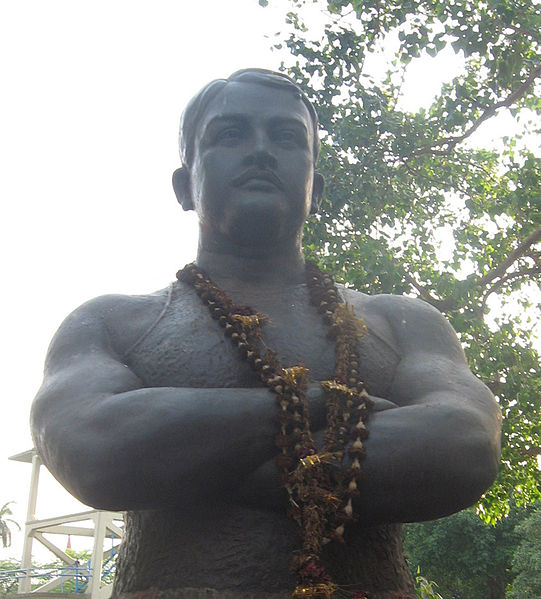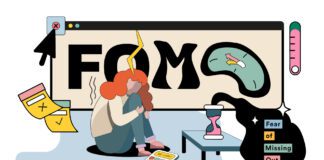The year was 1909. Wrestling was a popular pastime in the Indian subcontinent for centuries, especially under royal patronage, was disappearing along with India’s princely states. However, it took barely 18-year old Jatindra Charan Guho to change not only how the wrestling world look in at India, but also the way Indian wrestler look at themselves.
Jatindra Charan Guha was a world famous Indian wrestler and a practitioner of Pehlwani, popularly known by his ring name Gobar Guha. Jatindra Charan Guho was the first Asian to win the World Light Heavyweight Championship in the United States in 1921. Jatindra Charan Guho was born in 13 March 1892(Kolkata, Bengal, British India) and died in 2 January 1972(Kolkata, West Bengal, India) at the age of 79.
Despite growing up around wrestling, Jatindra Charan Guho showed no interest in taking up the sport. In fact, Guho was receiving training in Hindustani classical music. After Guho’s father died in 1901, his family-unwilling to let the family’s association with wrestling end with Ram-Charan- decided that the heavy-built nine-year-old Guho should pick up the sport.
By the age of 15 he was a natural under the guidance from his uncle Khetracharan- had become a proper Pehlwani(a wrestler). His uncle hired Rehman , a well-known guru from Amritsar , as Guho’s personal trainer. Then he started establishing himself as a professional wrestler in 1909, his uncle died. This was a huge personal and professional blow for the budding Pehlwan.
Jatindra Charan Guho came from a family of Wrestlers. His family known for pioneering and promoting the art of physical culture in Bengal, for generations. This was the time when the revolutionary wave against the British was in full force across the country, including Bengal. Guho’s forebears included the legendary Ambu babu, and Khetu Babu who tutored Swami Vivekananda in the finer point of wrestling. Many akhadas , several of which had been instituted by his grandfather Ambu Babu, becoming fronts for the underground network of armed revolutionaries and training bases for local Gundas. His father , Ram Charan in 1892 in Kolkata. Guho began his initial training under the guidance of his grandfather Ambika Charan Guho. Jatindra Charan Guho began his training under famous Indian wrestlers like Kholsa Chaubey and Rahmani Pehlwani , who was employed by the Guho family. Guho’s was six feet and one inch in height and weighed around 290 pounds. His chest measured 48 inches. Jyotindra Charan Guho passed the Entrance Exam from Vidyasagar school in 1910. Guho received training in Hindustani classical music from Kukuv Khan and used to attend the musical soirees of Narendranath Bose.
At the age of 18 Gobar embarked on a professional career in wrestling in 1910. He didn’t take any money for his debuted against Navrang Singh, the court wrestler of the Maharaja of Tripura. The John Bull society of London organized a world wrestling championship bout to which the wrestlers from all over the world, Jatindra Chandra Guho and Junior Gama of India were invited in 1910. Meanwhile Sarat Kumar Mitra (an affluent businessman) with a penchant for wrestling asked Gobar to accompany him to Lahore to witness a much-hyped match between two contemporary wrestling great: Ghulam Muhammad Baksh Butt (Great Gama) and Rahim Sultaniwala. Guho was inspired by the intensity and quality of the fight and asked his brother in law to sponsor wrestler like Gama, Sultaniwala and other budding Indian talents to London to fight with International wrestler and show the world just how good Indian’s are.
Gobar fought bouts in Italy in his first tour of Europe in 1912 and returned home in 1915. He met Jack Johnson , the first black world heavy weight boxing champion at the wrestling tournament in Paris during the Trip. Then he defeated Campbell, the highest ranked wrestler of Scotland. Guho’s next bout was against Scottish strongman and wrestler Jimmy Esson of Aberdeen, who was the great strongman and wrestler Georg Hackenschmidt as the ‘Scotch Giant’. Esson was in the end resorted to illegal boxing punches and was at receiving through out the fight. Gobar duly wrestled the ‘giant’ on to ground and remained undeterred. Jatindra Charan Guho became the first Asian to win a professional Wrestling Championship in the United States. Guho was pitted against the famous Ed ‘Strangler’ Lewis, considered by many to be the grestest ever professional wrestler. He first tried his famous headlockon Gobar but to little effect. Lewis managed to floor Gobar once , but the latter soon returned the compliment after a few rounds. When Lewis resorted to foul play by hitting Gobar with a boxer’s punch both fighters had registered two falls each. Gobar fought another memorable fight against the younger Gama at Park Circus, Kolkata in a bout that has since passed into the folklore of Indian wrestling in 1929. The older Gobar finally lost technicality after a stirring fight which showcased all the moves of Indian wrestling. In 1936 the akhara that was established by his ancestor at Masjidbari street was reincarnated by Gobar Guho at Goabagan. In 1944 Gobar retired from a professional wrestling.
His achievement and success inspired Bengalis to take up wrestling as a career. Both Manohar Aich and Monotosh Roy were inspired by his successes. His own disciples were Banamali Ghosh, Jyotish Charan Ghosh and Biswanath Dutta. In 1992 his followers observed his birth centenary. Goabagan Street has been named Gobar Guho Sarani in his honour in North Kolkata. His statue was unveiled at the Azad Hind Bagh in 1996 by the then Governor of West Bengal, Late Raghunath Reddy. His akhara Gobar Guho’s Gymnasium runs firmly at 19/D/H/7, Gobar Guho Sarani , Kolkata-700006. Scottish Church College is the nearest landmark.
Though India has risen as a wrestling superpower by winning medals in every Olympics since 2008 Beijing Olympics. But, the first Asian Wrestler who won the World Professional Wrestling Championships was Jatindra Charan Guho (Gobar Guho).
In 1900’s Robert Ripley’s( American cartoonist) newspaper column ‘Believe It or Not’ had become widely popular. His cartoons were soon appearing in articles in the New Work Evening Post. In one of his sketches , he illustrated ‘Gobar’, a wrestler from India. Titled ‘The Gold Eater’ , the illustration shows that Gobar sitting with his folded legs on the Ground eating gold pieces from his plate. Adjacent to that picture depicts Gobar climbing the stairs with the caption ‘Wears a stone collar’.
At that time, Gobar’s legacy had smitten fans, opponents and critics alike. One newspaper described him as a ‘Hindu Prince’ and some other said he was an Oxford Graduate , the San Francisco Chronicle labelled him as the ‘Hindu Giant’.










